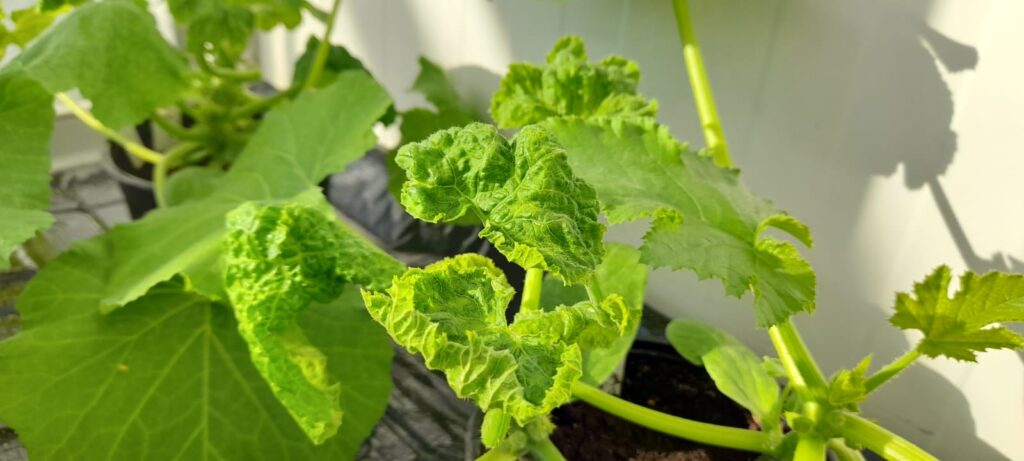[PhD defence] 25/11/2024 - Adriana Atiwich PATTHAMAPORNSIRIKUL : " Understanding and mitigating the emergence of " Tomato leaf curl New Delhi virus " in France " (UPR 407 - PV - Plant pathology)
Adriana Atiwich PATTHAMAPORNSIRIKUL will submit her thesis on 25 November 2024 on the subject of "Understanding and mitigating the emergence of Tomato leaf curl New Delhi virus in France".
Date and place
Monday 25 November 2024 at 1.30pm
Location: INRAE, Centre de Recherche PACA Unité de Pathologie végétale - Plant Pathology Research Unit Domaine Saint Maurice 67 allée des chênes, CS 60094 84143 Montfavet, France
Venue: Alpilles
Discipline
Agricultural sciences

Laboratory
UPR 407 - PV - Plant pathology
Composition of the jury
| Ms CECILE DESBIEZ | Avignon University and INRAE | Thesis supervisor |
| Mr Michel PETERSCHMITT | CIRAD | Rapporteur |
| Ms Charlotte TOLLENAERE | IRD | Rapporteur |
| Mr Eric VERDIN | INRAE | Thesis co-supervisor |
| Mr Juan José LÓPEZ-MOYA | CRAG | Examiner |
| Ms Manuella VAN MUNSTER | INRAE | Examiner |
| Ms Catherine DOGIMONT | INRAE | Examiner |
| Mr Jean-Luc GALLOIS | INRAE | Examiner |
| Ms Wanwisa SIRIWAN | Kasetsart University | Guest |
Summary
Over the past decade, tomato leaf curl New Delhi virus (ToLCNDV, begomovirus), transmitted by the whitefly Bemisia tabaci, has appeared in Mediterranean countries, mainly infecting cucurbits. It was detected in France for the first time in 2020, and some of the first French isolates observed showed an atypical recovery phenotype after inoculation on susceptible courgettes and melons. We therefore studied the biological and molecular variability of the French isolates, in order to characterise the risks and mechanisms of emergence of this virus. We first obtained different types of infectious clones from French isolates, and optimised inoculation methods to study them biologically and molecularly. In addition, we assessed viral accumulation in different contexts after developing multiplex TaqMan qPCR. We observed that the French isolates, although all belonging to the 'Mediterranean' clade of ToLCNDV, have displayed relatively high genetic diversity since the first year of detection (2020), suggesting multiple introductions. They also display different pathogenicity, with 'severe' or 'recovery' symptoms, with reduced virus accumulation associated with the 'recovery' phenotype. We have shown that the virus can overwinter in other host plants such as bryony (Bryonia dioica), while there is no evidence of seed transmission in melon or transmission by the whitefly Trialeurodes vaporariorum. Severe' and 'recovery' phenotypes were also observed in France in 2022. The prevalence and molecular diversity of ToLCNDV appeared to increase between 2020 and 2023. In a mixed infection of a 'recovery' ToLCNDV isolate with watermelon mosaic virus (WMV), a very common virus in south-eastern France, extremely severe symptoms were observed on melons. The 'recovery' phenotype and the associated reduced accumulation of ToLCNDV were no longer observed. We also studied the effects of a mixed infection between ToLCNDV and another virus transmitted by B. tabaci, cucurbit yellow stunting disorder virus (CYSDV), on virus accumulation, host symptomatology and whitefly transmission. In order to develop durable resistance to ToLCNDV, we tested whether the resistance determinants of three melon accessions with high resistance to ToLCNDV, PI-124112, IC-274014, and WM7, were identical or different - in which case virus management by pyramiding of resistance determinants would be possible -, and showed that the resistance determinants in these melon accessions appear to be identical or related. Trials to overcome the resistance of these accessions under abiotic stress (effect of temperature and drought stress) and biotic stress (mixed infection by WMV, zucchini yellow mosaic virus or cucumber mosaic virus) failed, indicating good potential durability of the resistances. In this study, we demonstrated that French ToLCNDV is heterogeneous, probably in relation to multiple introductions, and that maintenance or (re)introduction of the virus involves whitefly transmission and viral overwintering in local plant reservoirs. The 'recovery' phenotype associated with certain French isolates was lost during mixed infections with WMV, a very common virus in south-eastern France, which could contribute to the maintenance of these isolates despite their apparent lack of competitiveness. The risk of ToLCNDV emerging in France is therefore high, but the resistance available in melon accessions could help mitigate the impact of ToLCNDV on crops.
Keywords : ToLCNDV, Melon, Emergence, Epidemiology, Multiple infections, Resistance

Updated on 12 November 2024